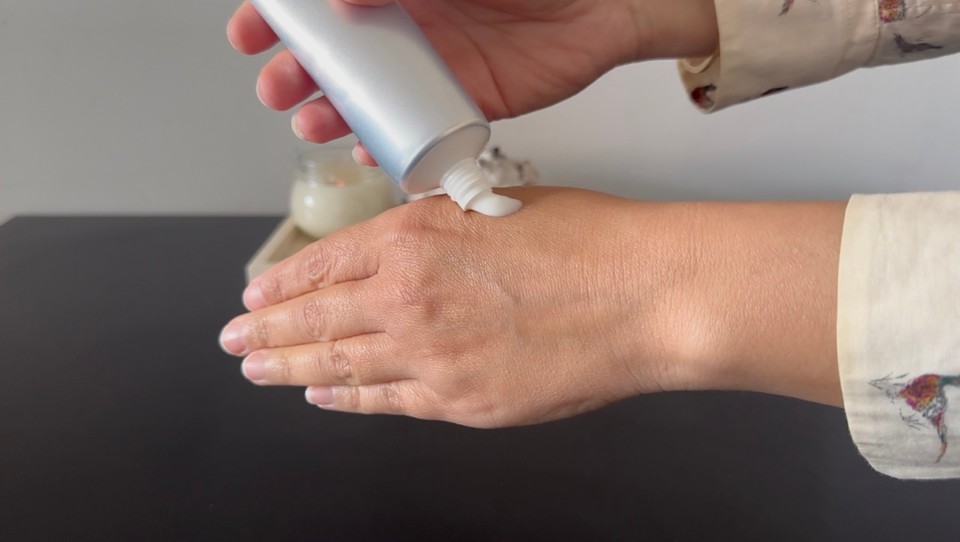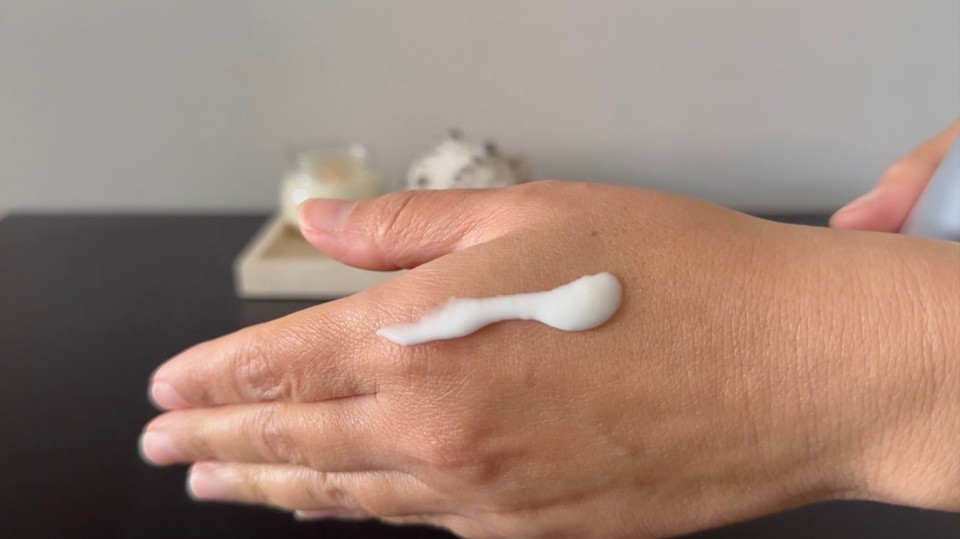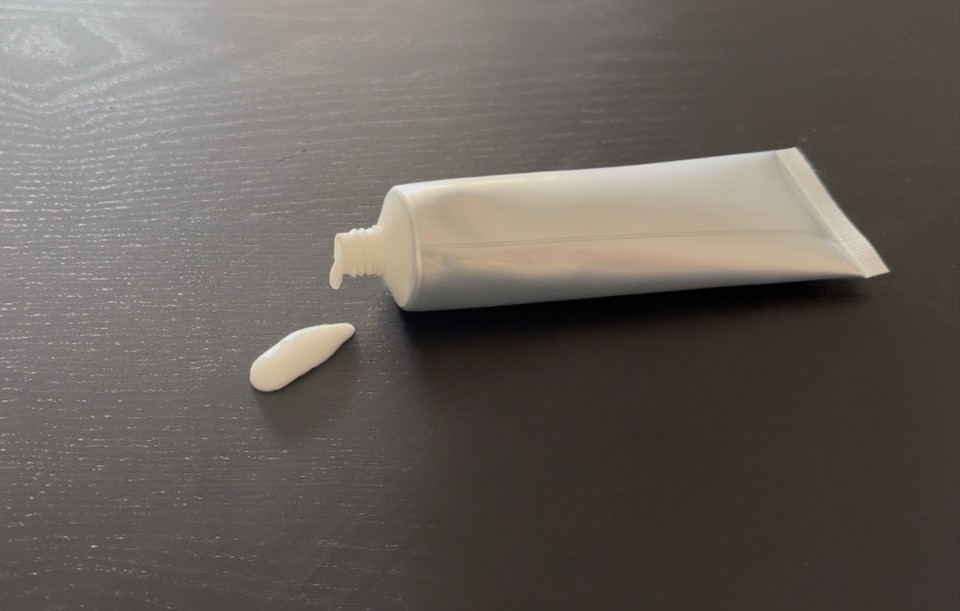Body Cream For Cellulite
| Phase | Ingredient | Percent (%) | Weight (g) |
|---|---|---|---|
| Phase A | Distilled water | 62.2 | 62.2 |
| Glycerin | 4 | 4 | |
| Xanthan Gum | 0.2 | 0.2 | |
| Caffeine anhydrous USP (INCI - Caffeine) | 4 | 4 | |
| Phase B | Coco caprylate | 10 | 10 |
| Jojoba wax (INCI - HYDROGENATED JOJOBA OIL) | 3 | 3 | |
| Sunflower oil high oleic | 6 | 6 | |
| Methyl Glucose Sesquistearate (Emulsifier) | 4 | 4 | |
| Crystal Menthol (INCI - Menthol) | 0.8 | 0.8 | |
| Phase C | Vitamin E (INCI - Tocoferoles Naturales) | 0.3 | 0.3 |
| Fragrance oil (passion fruit) | 0.7 | 0.7 | |
| Silica Microspheres (INCI - SILICA) | 1 | 1 | |
| Preservative Cosgard (INCI - Benzyl Alcohol, Dehydroacetic Acid, Aqua) | 0.8 | 0.8 | |
| Grapefruit extract (INCI - Citrus grandis seed extract, Glycerin, Aqua) | 1 | 1 | |
| Green tea extract (INCI - Camellia Sinensis Leaf Extract) | 2 | 2 |
You can help support my website and channel through the “buy me a coffee” page.
Here is the link: https://www.buymeacoffee.com/diycosmetica
Your support helps me keep sharing here more information and more formulas.
If you want to read about the basic creams and lotions, please check the post on How to Make a Basic Lotion / Cream.
Cellulite is often described as a skin condition that creates a dimpled or lumpy appearance, typically on the thighs and buttocks. Many people seek ways to reduce the visibility of cellulite and turn to creams as a potential solution. So, what causes cellulite? Well, beneath our skin, a layer of connective tissue separates fat cells into compartments. Factors like hormones, lack of physical activity, and even genetics can cause this tissue to stretch or become less elastic, allowing the fat cells to push against the skin and create the puckered look we know as cellulite. While cellulite is entirely natural and more common than you might think, especially among women, the market is full of creams that claim to help. These creams contain ingredients like caffeine, menthol, and various botanical extracts, which aim to tighten the skin and increase blood flow to the affected areas.

Creams for cellulite can slightly improve cellulite's appearance, especially when massaged vigorously, which can improve circulation and temporarily plump up the skin.
When it comes to cellulite and the use of creams, it's important to maintain realistic expectations. Creams can assist in reducing its appearance, but no cream can eliminate cellulite.
More products to improve skin's texture and tone: Brightening Body Scrub, Solid Cleanser Scrub and Glycolic Acid Foaming Cleanser.
Caffeine and menthol are the main ingredients used in cellulite creams and are the main active ingredients in this formula. I used Caffeine anhydrous in this formula.
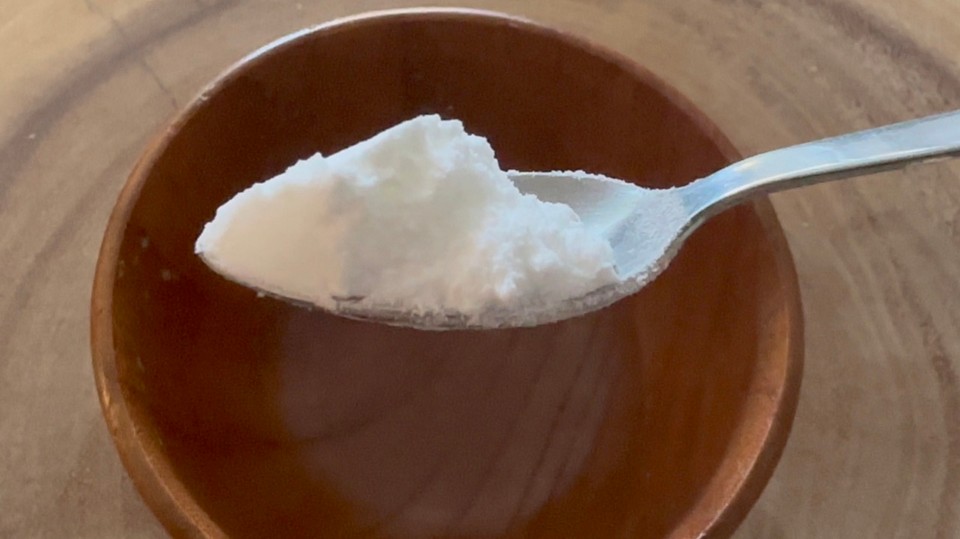
Caffeine is a highly effective component in creams designed for cellulite treatment; it is known for its ability to break down fat stored in fat cells through a process called lipolysis. It inhibits phosphodiesterase, an enzyme that breaks down cyclic AMP (cAMP). Higher levels of cAMP enhance the fat-burning rate, helping to diminish the fat deposits that cause cellulite's dimpled appearance. Additionally, caffeine boosts microcirculation in the skin, improving blood flow and oxygenation to the tissues. This enhanced circulation aids in flushing out toxins and reducing water retention in cellulite-prone areas, leading to smoother skin. As an antioxidant, caffeine also plays a crucial role in neutralizing free radicals, the unstable molecules that can damage skin cells. This protection helps improve the overall health and appearance of the skin. Furthermore, caffeine's mild diuretic effect reduces fluid retention under the skin, alleviating puffiness and swelling associated with cellulite, thus enhancing the skin's smoothness. For optimal results, cellulite treatment creams should contain a caffeine concentration of about 3-5%. This level is generally effective for significantly improving skin texture and tightness, making it a key ingredient in the battle against cellulite.
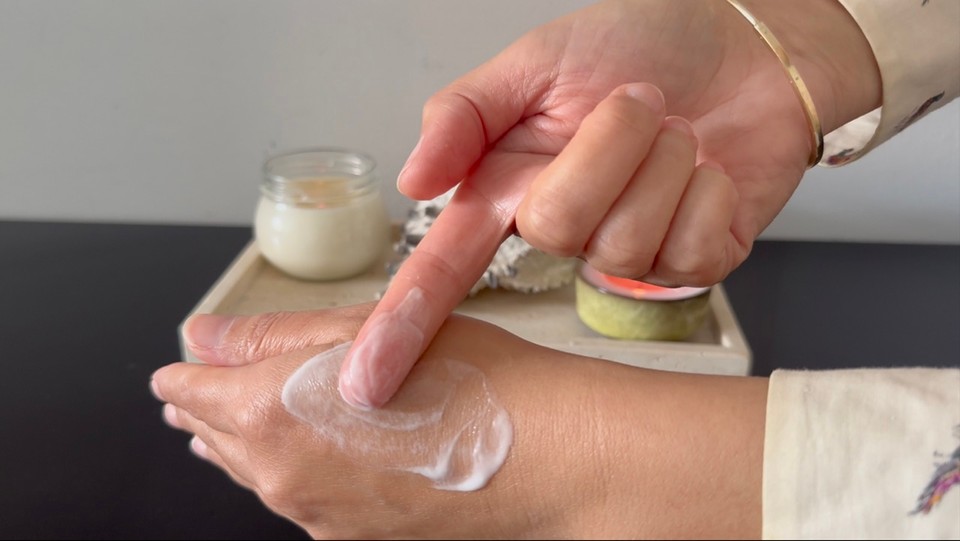
Caffeine anhydrous is a highly concentrated, dehydrated, crystalline powder form of caffeine. It is chemically identical to the caffeine in coffee, tea, and other natural sources but without water content. Due to its dehydrated and concentrated nature, caffeine anhydrous is significantly more potent by volume than the caffeine typically found in foods and beverages. The body rapidly absorbs this form of caffeine. It is utilized for its stimulating effects on the skin, notably in reducing eye puffiness in eye products and improving the skin's overall appearance in body products.
You can read more about caffeine for cellulite treatments here:
https://pubmed.ncbi.nlm.nih.gov/23075568/
https://pubmed.ncbi.nlm.nih.gov/37499772/
I used crystal menthol in this formula.
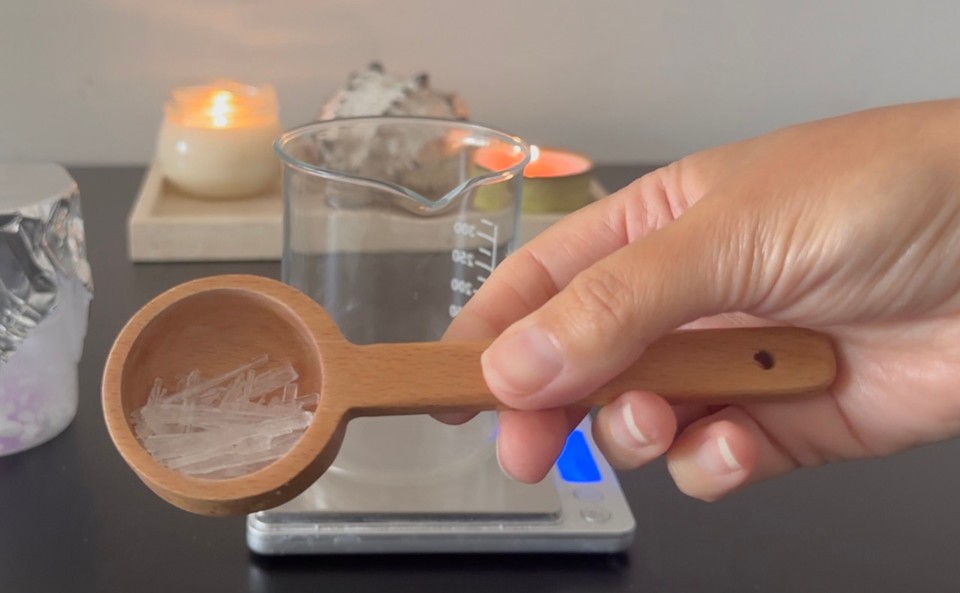
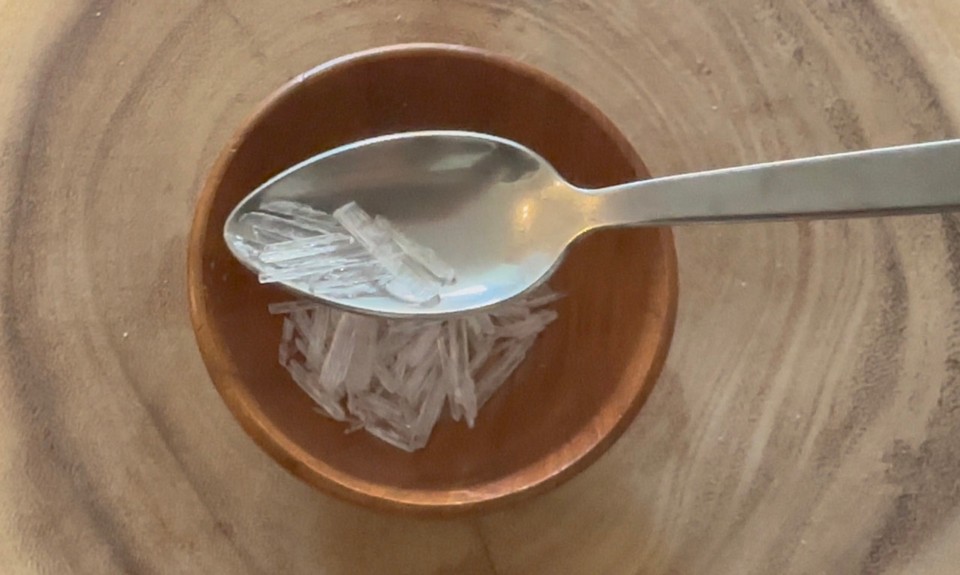
Menthol is known for its cooling properties, which provide a refreshing and soothing sensation when applied topically. This effect can temporarily alleviate any discomfort associated with cellulite. Menthol also stimulates blood flow to the skin's surface, enhancing the delivery of nutrients and oxygen vital for the health and appearance of areas affected by cellulite. Furthermore, its cooling and vasodilative properties can reduce tissue water retention, diminishing swelling and puffiness to create a smoother, more even skin appearance. Additionally, menthol is a penetration enhancer, improving the skin's absorption of other active ingredients in cellulite creams, like caffeine, thereby boosting the product's overall effectiveness.
Crystal Menthol should not be used if pregnant or breastfeeding. Crystal menthol is not suitable for babies or kids and products with menthol should not be applied close to the eyes area.
I formulated this body cream to be light and non-grey, which means it is absorbed more quickly by the skin without leaving a greasy residue. This makes it easier to apply to a wide area and rub the cream onto the area of skin with cellulite using circular motions.
I used coco caprylate, Sunflower oil (high oleic) and jojoba wax for a light and non-greasy cream.
Coco caprylate, sourced from the richness of coconut oil, is a gentle emollient that tenderly softens and calms the skin. It is known for its feather-light and non-greasy quality. This ingredient is the secret behind the cream's ability to offer deep hydration while leaving your skin velvety and supple, free from any tackiness or weighty feel. It's the perfect hydrator for smooth, refreshed skin.
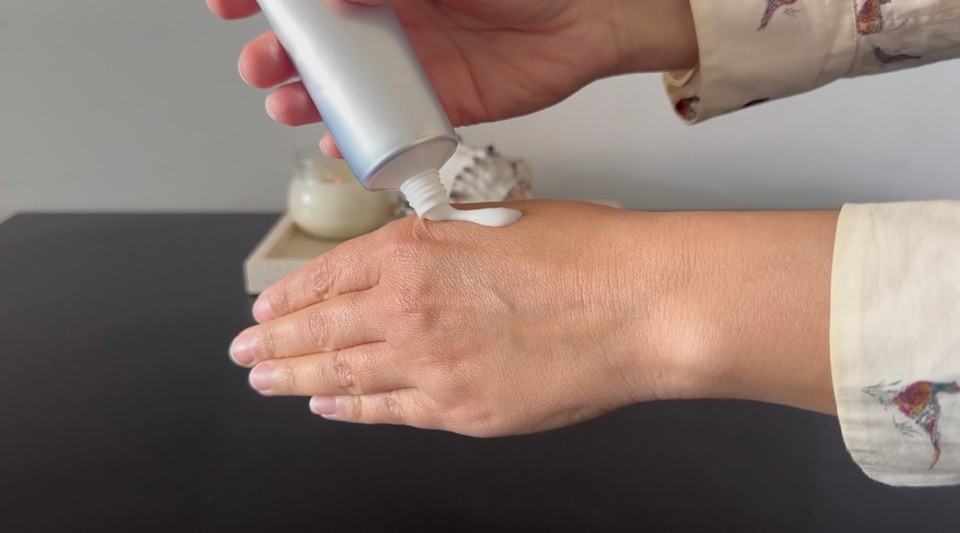
High oleic sunflower oil is a durable and nourishing oil packed with vitamins E and A. High oleic sunflower oil is generally light in texture. It absorbs well into the skin without leaving a greasy residue. It deeply moisturizes, keeping the skin's barrier healthy and moisture locked in. Its soothing properties also help reduce skin redness, making it great for sensitive skin. Plus, it's less likely to spoil, staying fresh for longer.
You can replace the Coco caprylate with fractionated Coconut oil, Isoamyl Laurate, or Squalane. You can replace the sunflower oil with Jojoba oil, Safflower oil (High Oleic) or Rice Bran oil.
Jojoba wax offers several benefits. It moisturizes the skin without leaving a greasy feel and adds a silky, smooth texture to creams, improving their spreadability. Jojoba wax is also very stable, which helps prevent creams from spoiling and extends their shelf life. Additionally, it forms a protective barrier on the skin to lock in moisture and shield against environmental damage. With anti-inflammatory properties, jojoba wax is excellent for soothing irritated skin, making it ideal for sensitive or compromised skin types. You can replace the jojoba wax with berry wax or cetyl alcohol.

For an emulsifier, I used Methyl Glucose Sesquistearate. Methyl Glucose Sesquistearate, sourced from natural sugars and fatty acids, stands out as a gentle emulsifier ideal for sensitive skin products due to its mild nature, reducing the likelihood of skin irritation. It plays a crucial role in body creams by forming a subtle barrier on the skin, which helps retain moisture, thereby boosting the cream's hydrating effects. Additionally, this emulsifier enriches creams with a luxurious feel, aiding in the creation of a creamy consistency that is perfectly balanced—not overly thick or too fluid.
You can use other emulsifiers such as Sucrose Stearate, Cetearyl Alcohol (and) Cetearyl Glucoside or Glyceryl Stearate.
I added two more active ingredients (in phase C) to this formula: the Grapefruit extract and Green tea extract. Grapefruit extract is packed with vitamin C and other antioxidants that shield the skin from harm caused by the environment, slowing down premature aging. It's also famous for boosting the lymphatic system and helping clear skin toxins. This is very useful in cellulite creams because removing toxins can smooth out those dimples. Plus, grapefruit extract improves blood flow, which is critical in fighting cellulite. Green tea extract, rich in polyphenols such as catechins, is a potent antioxidant that fights free radicals and calms inflammation, resulting in smoother-looking skin. Its caffeine content stimulates microcirculation, reducing water retention in cellulite and enhancing skin tone. The antioxidants in green tea, particularly EGCG, protect collagen from degradation, a vital component for maintaining skin elasticity and minimizing the appearance of cellulite. Moreover, green tea's anti-inflammatory properties can help alleviate the puffiness and swelling associated with cellulite. Instead of these extracts, you can use Seaweed extract, Centella Asiatica extract, Horsetail extract and Rosemary extract.
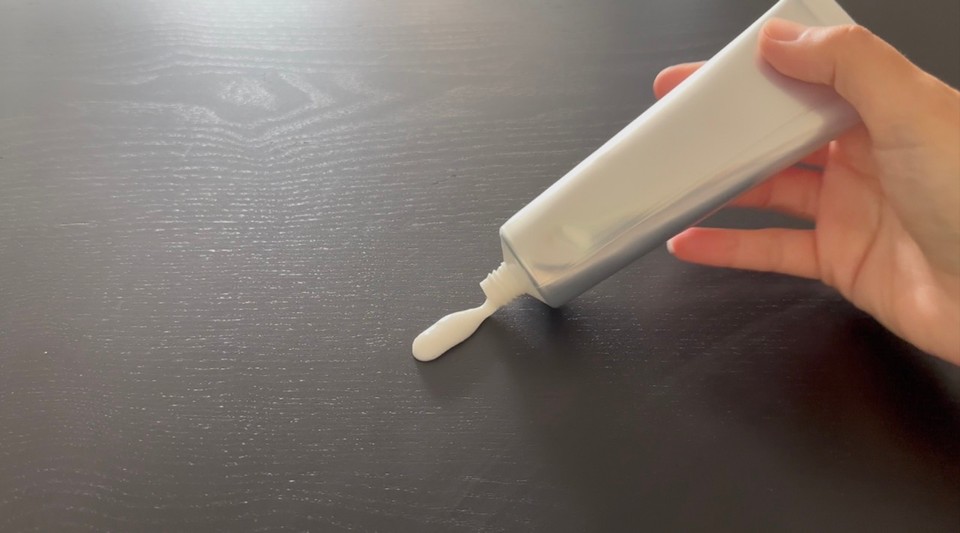
Another ingredient I used in phase C is Silica Powder Microspheres. The supplier I bought this from indicates that this Silica is Ecocert certificated and has a particle size of 5μ (microns).

Silica powder microspheres in body cream make your skin feel soft and silky because they have tiny, smooth particles. They're great at soaking up extra oil, making your skin look less shiny and more even where cellulite might show. Plus, they can scatter light like a camera filter, so cellulite looks less noticeable. Over time, they can even help tighten up your skin, making cellulite less noticeable. And they're handy at soaking up extra moisture, reducing puffiness and making your skin look smoother. You can use Arrowroot powder or Tapioca starch if you can't find Silica powder.
When you use Silica in a formula, consider that there are other kinds of Silica powder with the same INCI (such as Silicic Acid—colloidal Silica Powder and cosmetic-grade Pure Silica). I used Silica Microspheres, which typically have fine particle sizes ranging from nanometers to micrometers in diameter. All three types of Silica have similar chemical compositions, but they differ in particle size, texture, and application.
I covered most of the ingredients I used in this formula so you can get an idea of why they are included in this product; when you're using alternatives, consider that the final result will be a bit different.
If you are using another preservative - use it according to your supplier instructions.
Use the calculator to adjust the amount you wish to make.
Method:
- Add phase A ingredients to a heat-resistant beaker. Start with the gum and glycerin to create a slurry, then add the distilled water and the Caffeine anhydrous powder. Cover with aluminum foil to minimize evaporation. (in the video, I added 1.6 grams to the distilled water, when I made 200g total product, since this is the water evaporation I had from previous batches. You can scale your water phase before and after heating and add the evaporated amount after removing the water phase from the heat).

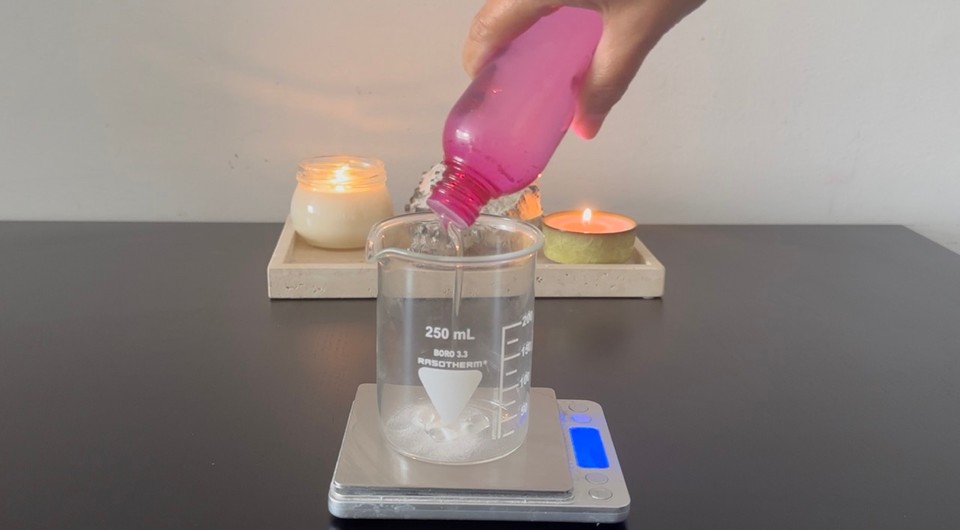
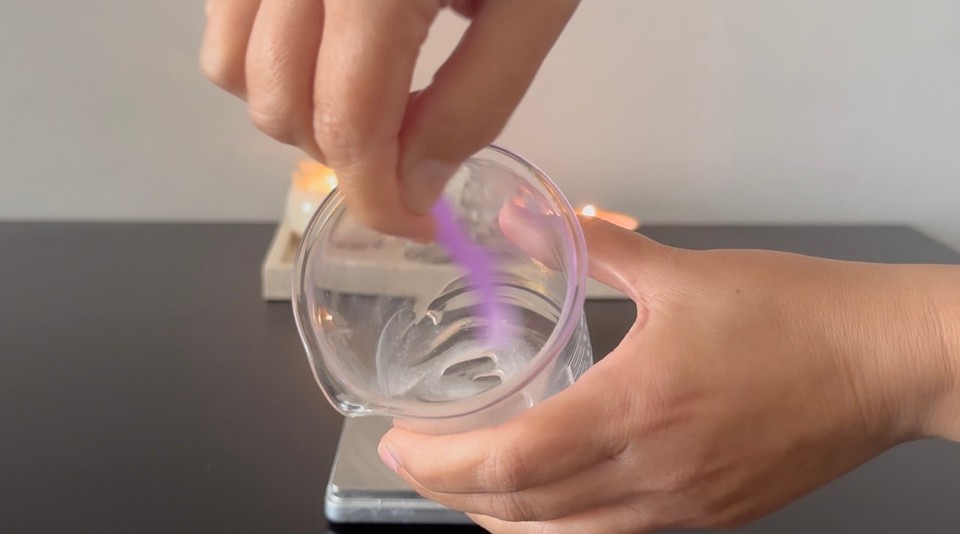
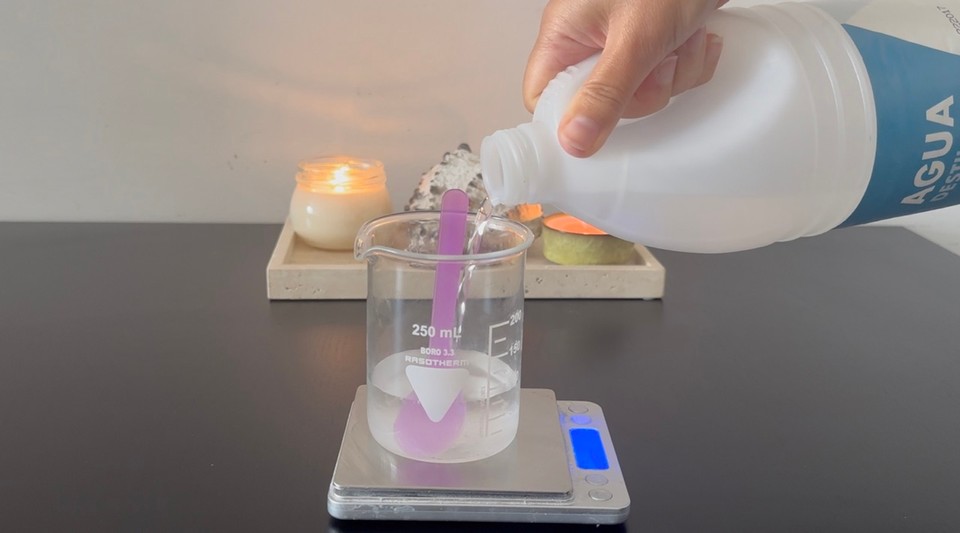
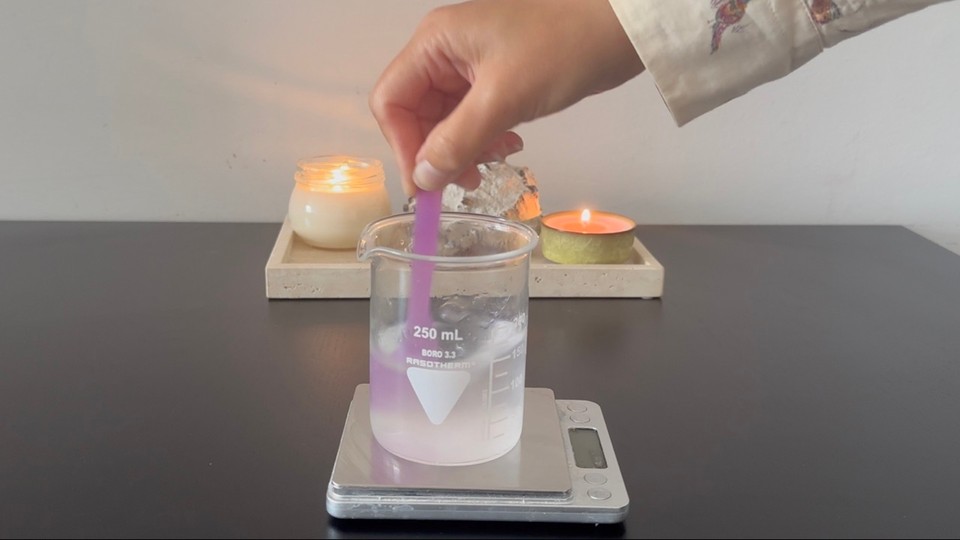

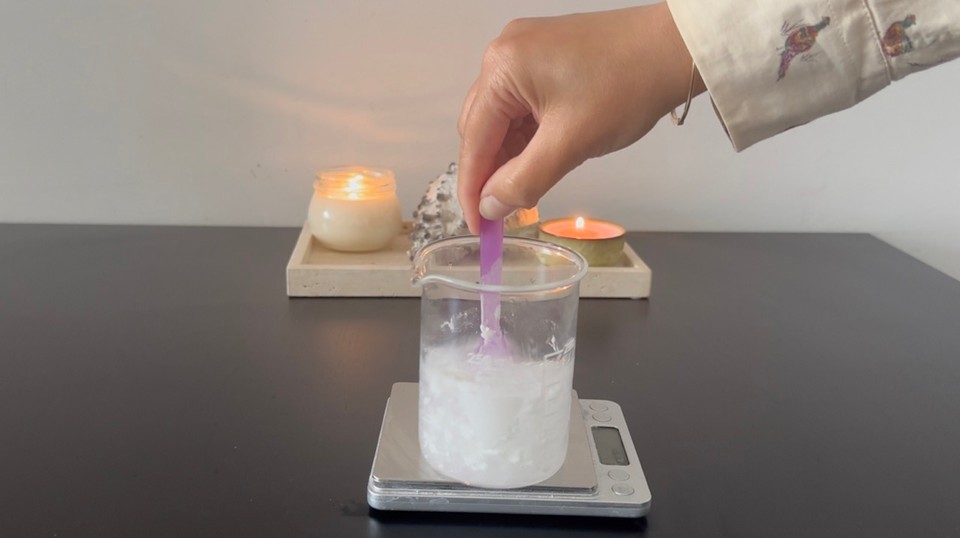

- Add the crystal menthol and the other phase B ingredients to another heat resistance beaker.
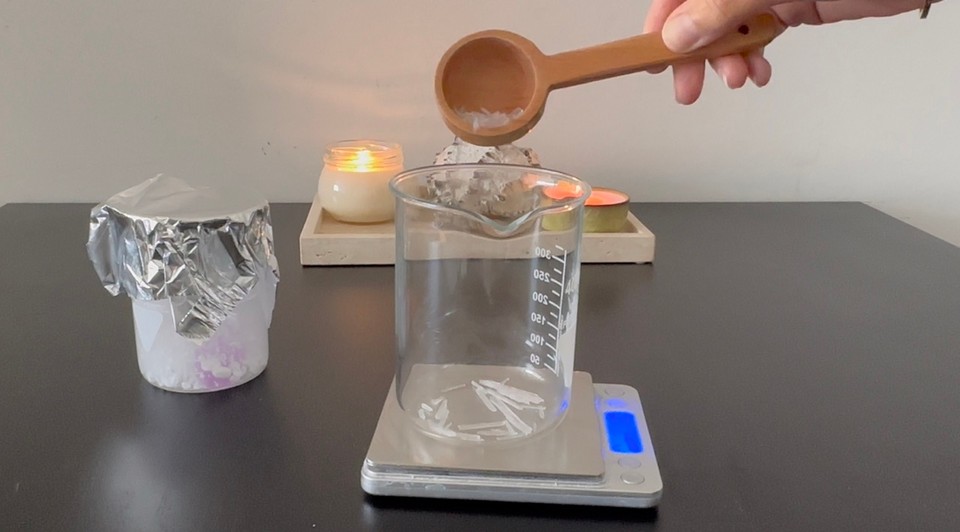

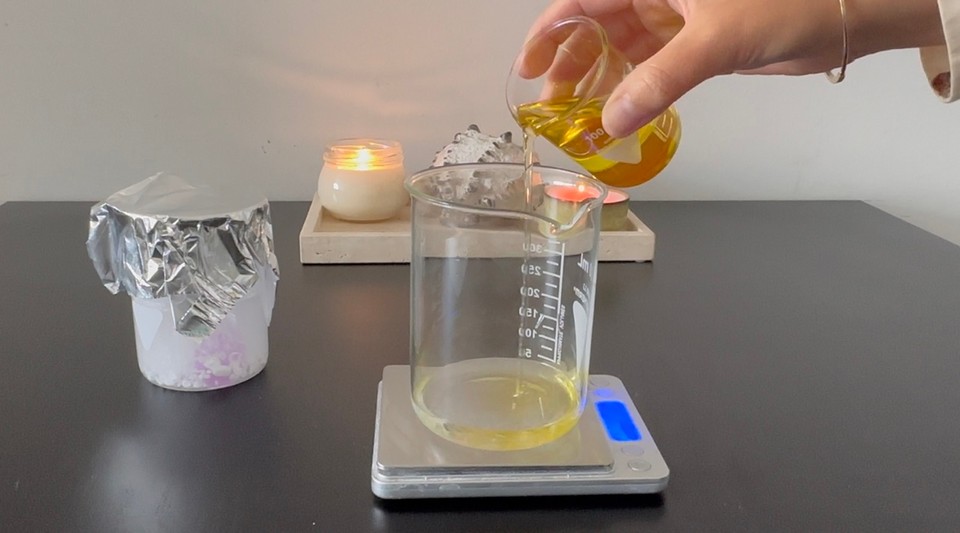
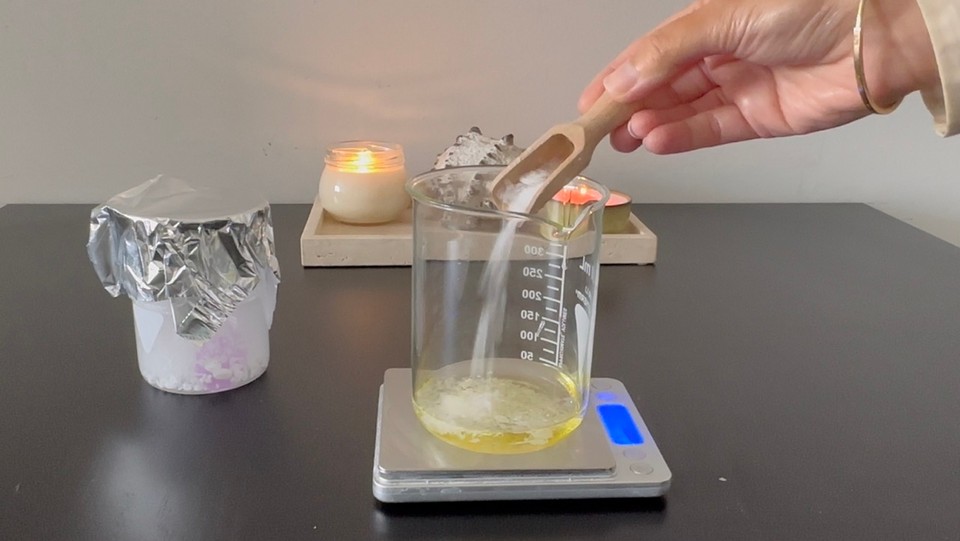
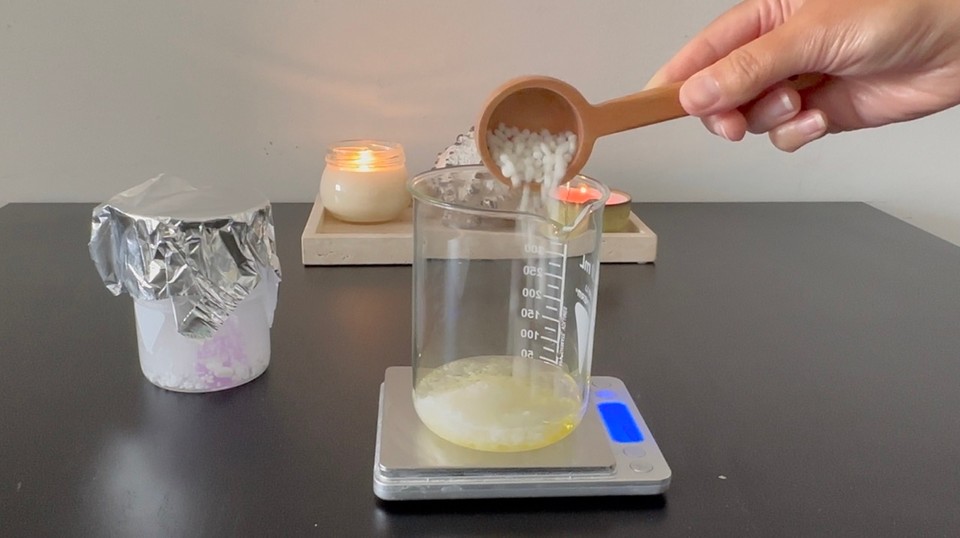
- Place phases A and B into a double boiler on low heat (Menthol crystals start to melt around 42°C) to melt the ingredients. I checked that the temperature is around 65-70°C while phases A and B are in the double boiler for 20 minutes.


- While phases A and B are heating, prepare phase C in a different container. Add the ingredients and mix to combine them. Place phase C aside.
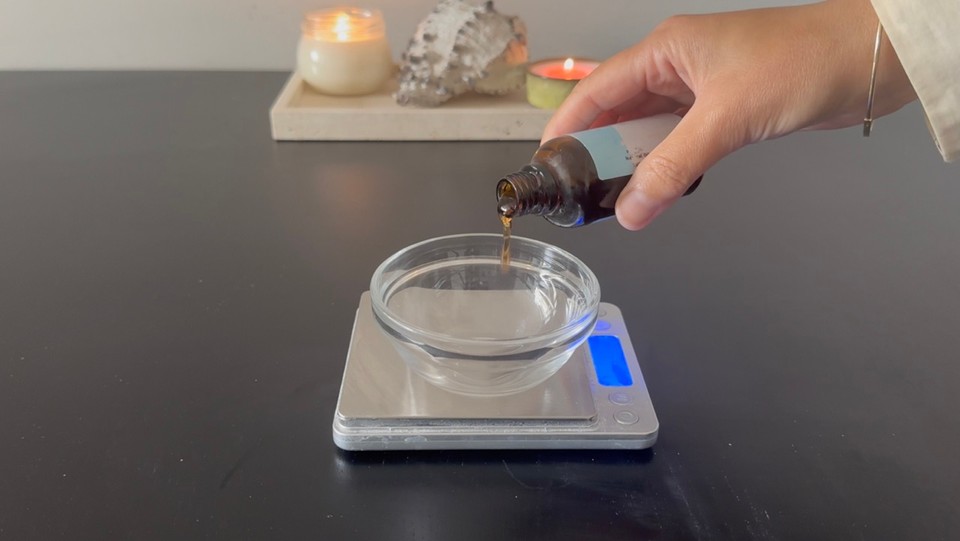

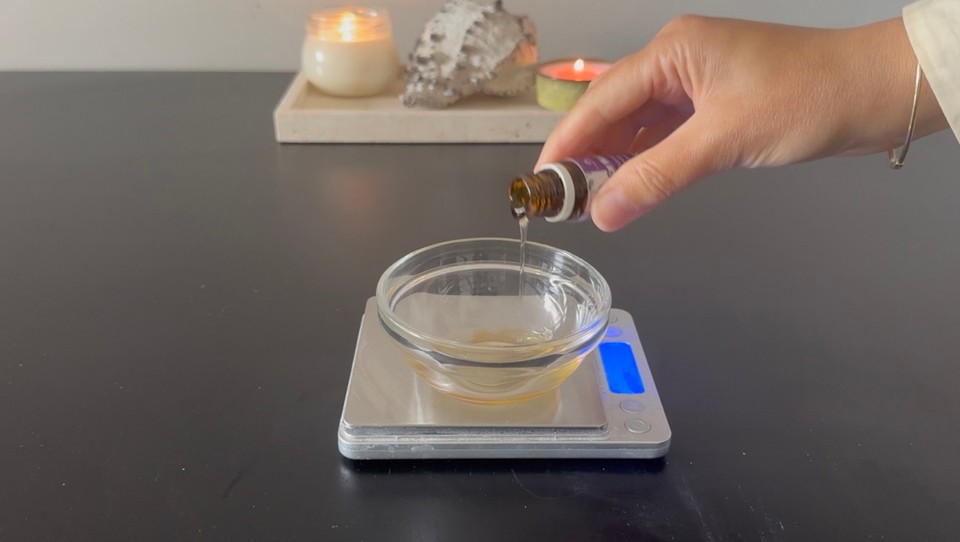
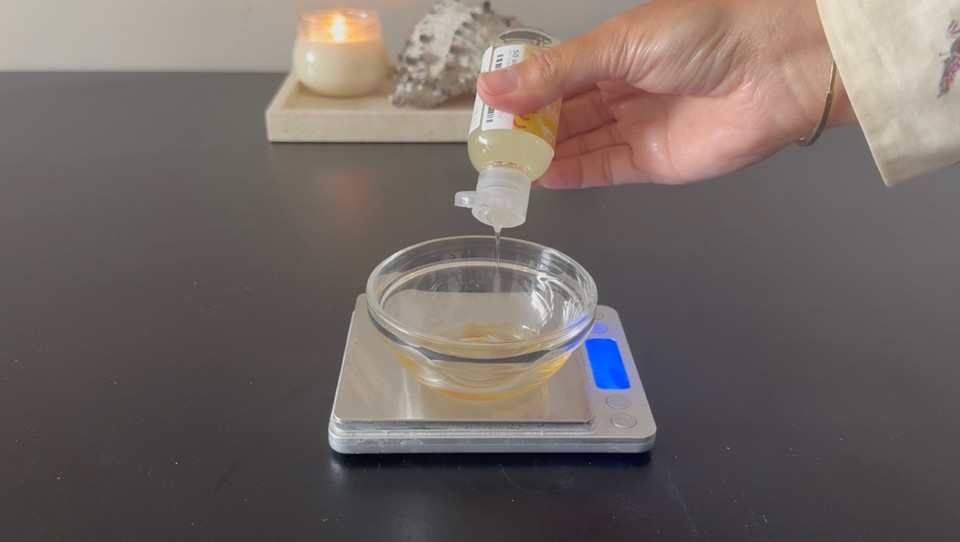

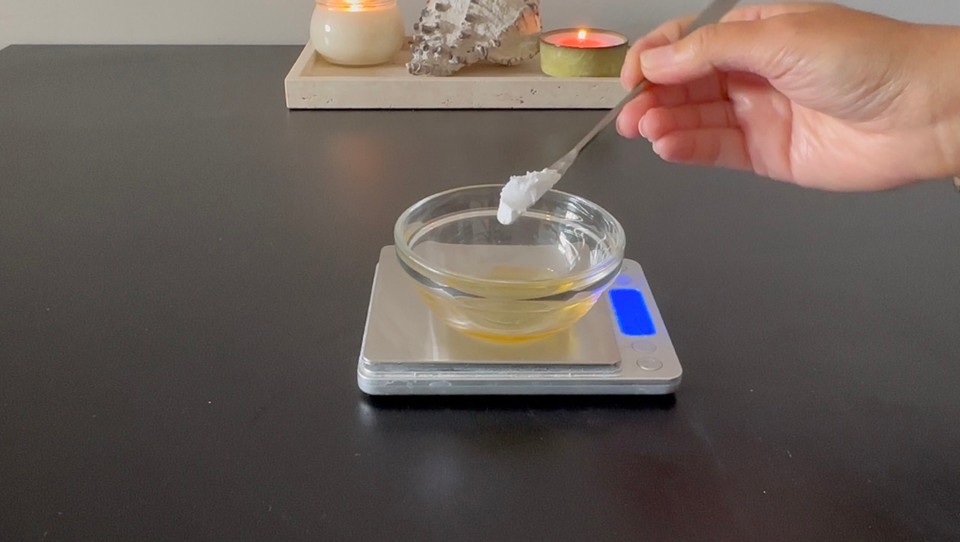
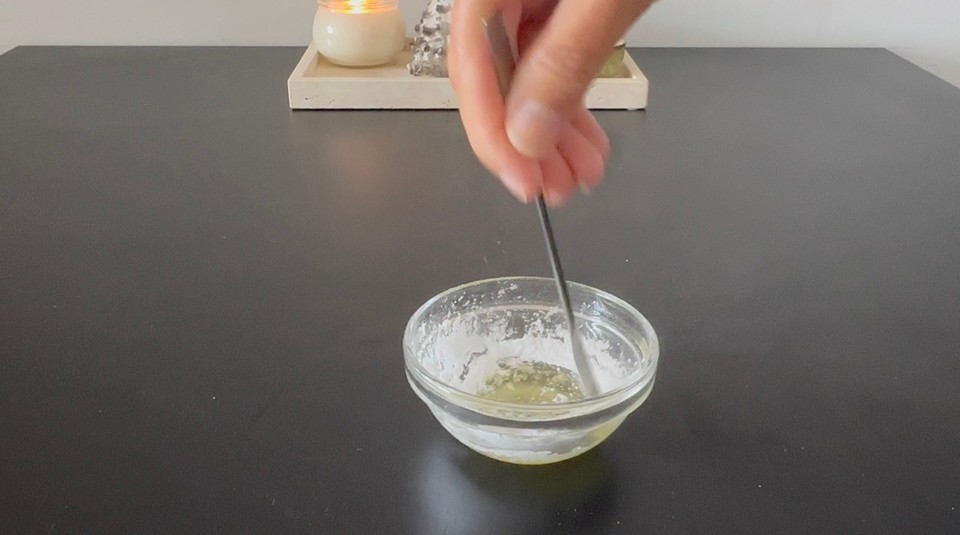

- Remove phases A and B from the heat. Combine phases A and B using a high-speed blender for 1-2 minutes. Let the mixture cool down.
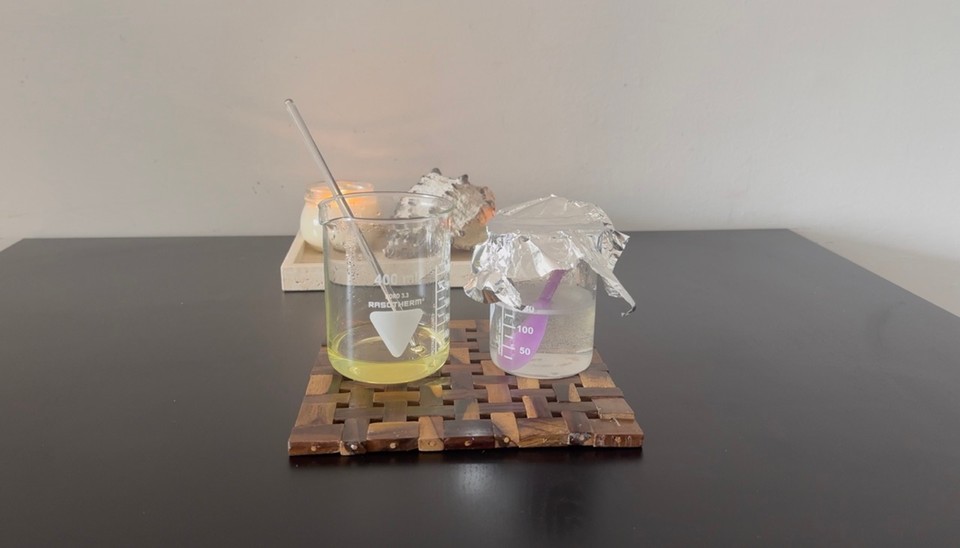

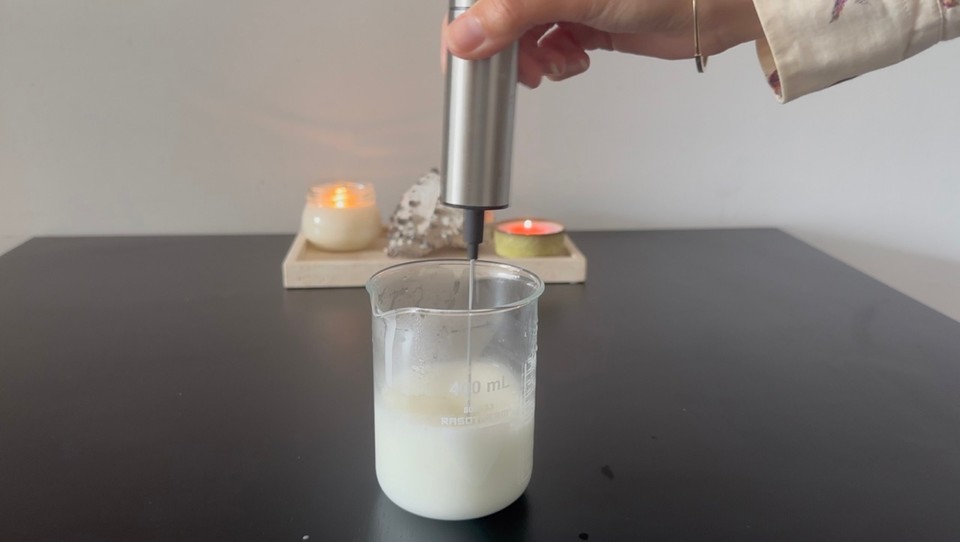
- Once the mixture has cooled down to less than 40°C, add phase C and mix to combine.
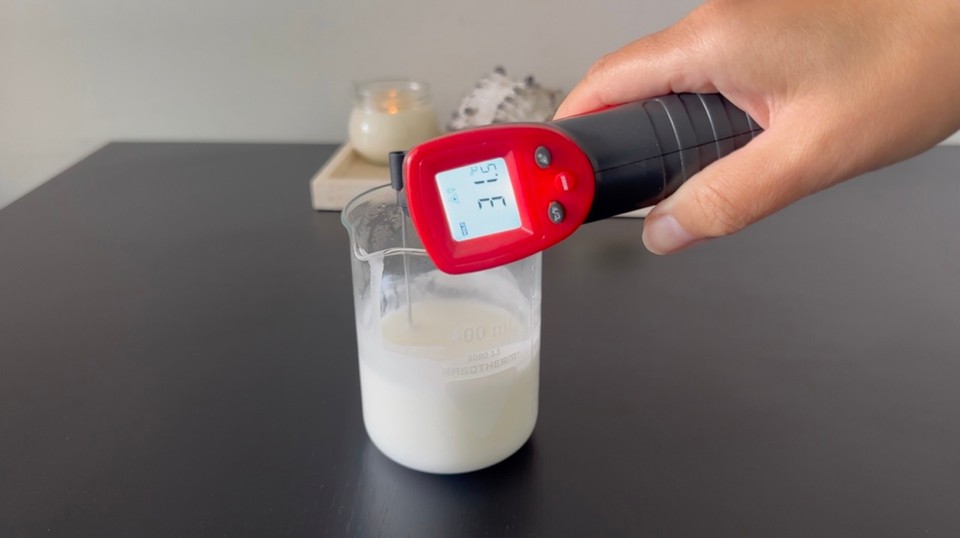
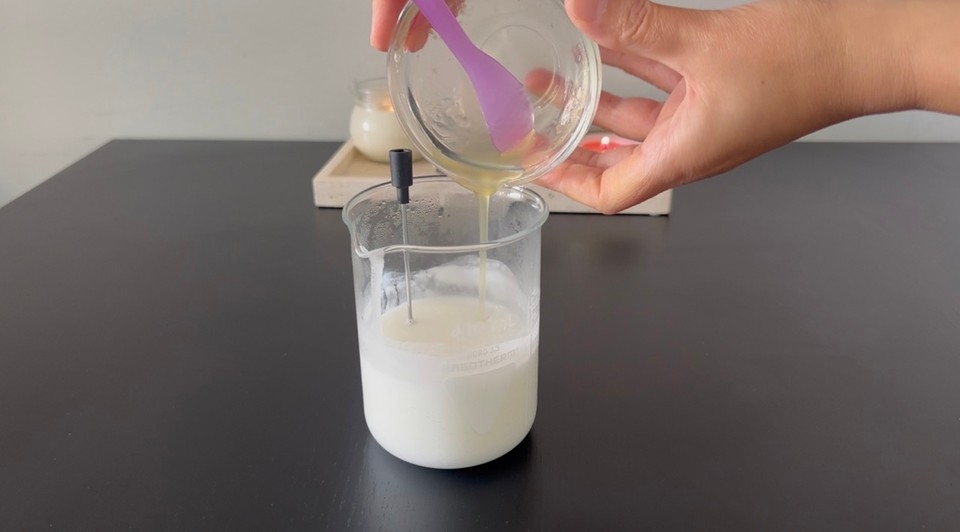
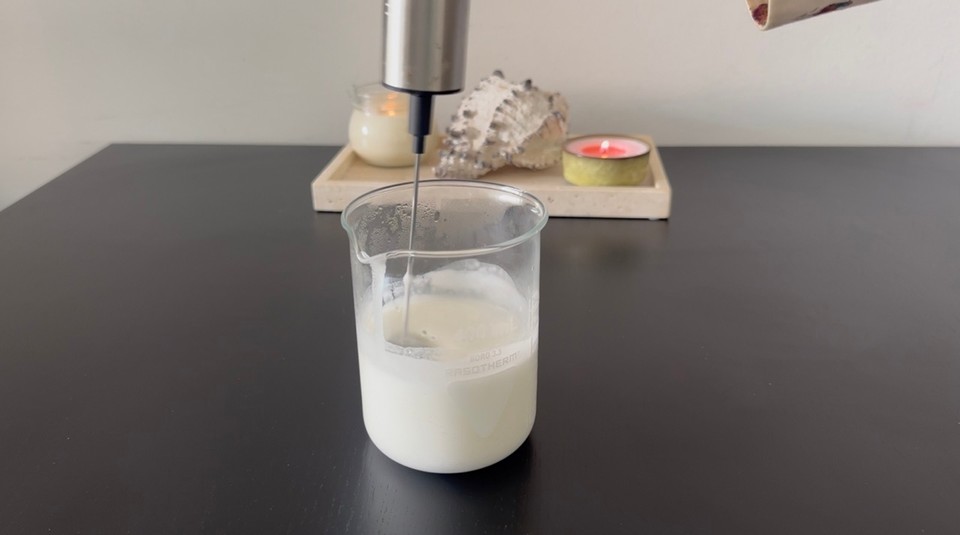
- Check the pH and adjust if necessary. Final pH of this cream should be 5-6. To read about pH adjustments please check the post on How to Adjust the PH Level in Cosmetics.



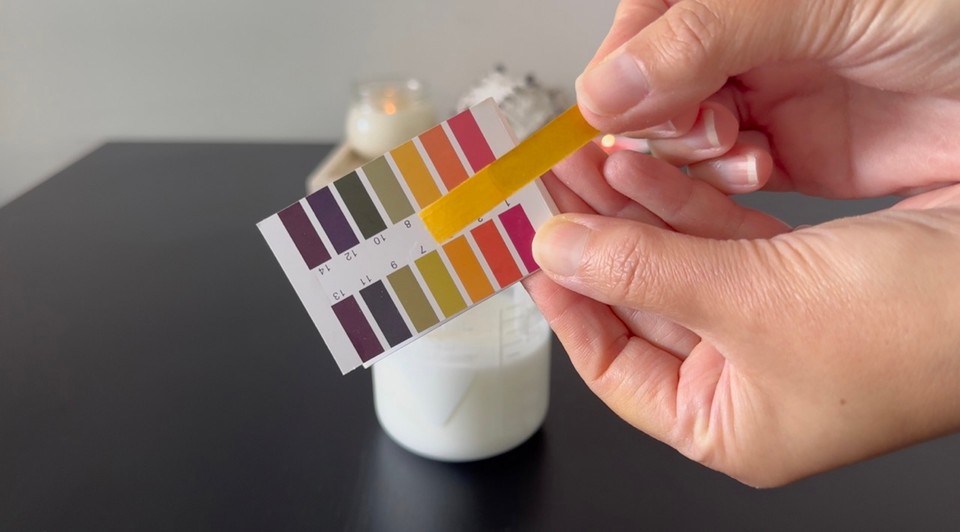
- Let the mixture rest for 4-5 hours and pour into a tube, pump or jar container.


- To use the cream: massage the cream into the skin using circular motions, focusing on areas with visible cellulite or dimpling. Ensure thorough coverage and massage the cream until fully absorbed.
